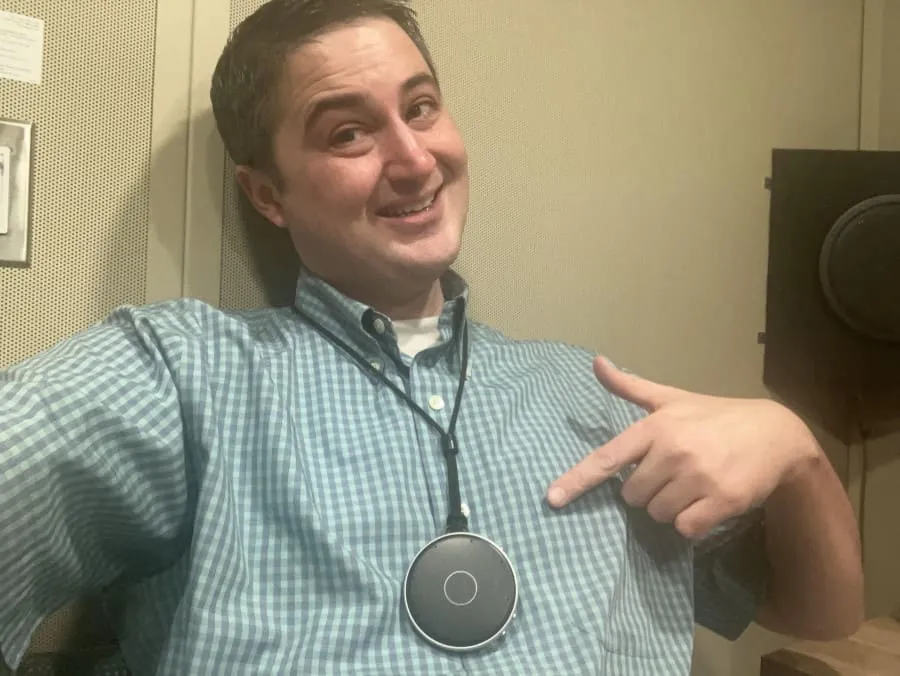Why Use a Remote Microphone With Hearing Aids?
Remote microphones can offer multiple advantages to users of hearing aids. Here are the top benefits:
- Improved speech understanding: Ideal for noisy environments, remote mics reduce ambient noise and transmit the speaker’s voice clearly.
- Increased participation: Enhances communication during group activities, lectures, or family gatherings.
- Reduced listening effort: Decreases cognitive strain when trying to hear speech in challenging acoustic environments.
- Greater independence: Helps users navigate public settings or meetings without always needing to ask for repetitions.
- Versatile use: Can be worn as a lapel mic, placed on a table for group discussions, or used for clearer phone calls.
Note: Not all remote microphones are compatible with all hearing aids. Consult your audiologist or hearing aid provider to verify compatibility. Use ZipHearing to find a local hearing professional near you.
How to Wear a Remote Microphone
The closer the microphone is to the speaker’s mouth, the clearer the sound transmission. Placement is key to optimizing performance.

Recommended placements for best results:
- Speaker’s lapel or collar: Offers direct and consistent voice pickup.
- Tabletop: For group settings like meetings or roundtable discussions.
- Phone attachment: For clearer conversations during phone calls.
Experiment with different placements depending on the situation. Placement greatly affects sound quality and directionality.
Battery Life of Remote Microphones
Battery life depends on the model, battery type, usage, and settings. Most remote microphones last between a few days and a few weeks on a full charge or set of batteries.
Factors that influence battery life:
- Battery type: Lithium-ion batteries generally last longer than disposable batteries.
- Usage time: Frequent use will drain batteries faster.
- Volume settings: Higher volume levels use more power.
- Distance from hearing aid: Longer transmission distances require more power.
- Battery indicators: Many devices have indicators or low-battery warnings to alert users in advance.
Where to Buy a Hearing Aid Remote Microphone
You can purchase remote microphones from several sources, depending on your preferences and compatibility needs.
- Hearing professionals: Audiologists and hearing aid specialists can recommend and sell compatible devices tailored to your hearing aids.
- Manufacturers: Leading brands like Phonak, Oticon, Widex, and Starkey offer branded remote mics—usually sold through professionals.
- Online retailers: Retailers like Amazon stock a wide variety of remote microphones.
- Assistive device stores: Specialty stores focusing on hearing and accessibility products may carry these as well.
Always confirm compatibility with your hearing aid brand and model. For specific guidance, consult a licensed audiologist or hearing aid provider.
Remote microphones can dramatically improve clarity in noise-heavy situations like restaurants or classrooms. For a bigger look at how these tools complement Bluetooth, telecoils, and other solutions, read our complete guide to hearing aid accessories and tech.

